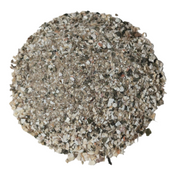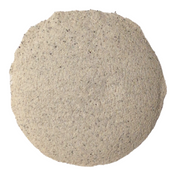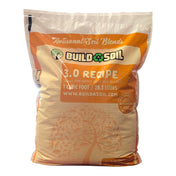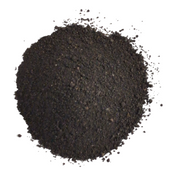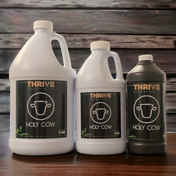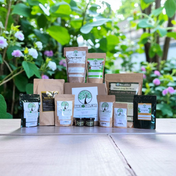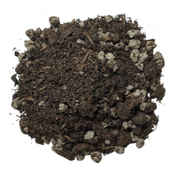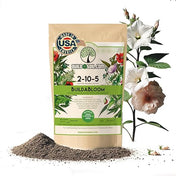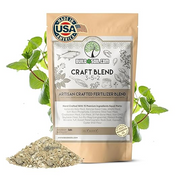Ever wondered what everyone is thinking about?
Here are 6 examples of growing styles that all claim to have the solution to better food, but do they?
Excerpt from "The Ideal Soil"
#1 The worldwide Organic agriculture movement and its various offshoots have so far only offered simplistic solutions, mostly one simplistic solution: add more organic matter to the soil. This is the school from which this book’s authors come, and most growers with whom we work are organic growers. ―More organic matter is a step in the right direction if the soil is low in humus, but does little to address nutritional deficiencies, especially mineral deficiencies. Yet it is fiercely defended and proclaimed to be ―the answer for everyone everywhere. Is it? No. While essential, soil biology and organic matter are only a part of what makes a healthy soil and nutrient dense crops. Nature is not simple, and simplistic one-size-fits-all answers are not going to solve the nutritional and environmental crises we face.
#2 Those who follow the Biodynamic school are to be commended for their deep appreciation of Nature and for having preserved much traditional knowledge and brought it into the present. They have an understanding of energy that goes far beyond simple electrical current flow, but by not fully understanding the minerals in their soil, they limit their potential.
# 3 Permaculture works fine in many instances, but is mostly an approach to stabilizing the existing soil, preventing erosion. Under a permaculture system the nutrients that are in the soil are largely retained; what is taken away is supposedly replaced with a fresh layer of organic matter. If every bit of the crop that was taken away was somehow brought back and replaced, the soil nutrient content would still only be what it was to start with, which in the case of most agricultural soils is far from ideal.
#4 The various fans and promoters of soil biology, from earthworms to fungus, tell us that a bio-active soil will break down toxic residues, increase humus, and the beneficial soil organisms will make minerals and nutrients available to the plant. The question that is not asked is ―what if the needed minerals are not to be found in the soil?
#5 The newer high-tech solutions, such as hydroponics, or even newer, aeroponics, rate a careful examination.
Can we count on them to rescue agriculture? Not if the goal is to feed the world's people and animals. They are fine for growing some pretty tomatoes to sell at the supermarket, or some nice lettuce in the basement, but these "new and modern" systems have a number of basic problems, some of them insurmountable if the goals are sustainability and nutrient-dense food. The most obvious failing is that they are energy-hungry. They use pumps and fans and often lights. In the interests of self-sufficiency, where is that energy to come from? If the power goes out is one going to pedal a bicycle generator to keep the pumps and fans going? In addition to being energy-hungry, both hydroponics and aeroponics require special containers, growing solutions, training and handling. They are not automatic.
There are other not so obvious problems with hydroponics. Any time one has a liquid-based growing solution they need water-soluble fertilizers, and these must be pure. One does not put compost in the hydroponic trays. This makes all natural organic hydroponics pretty difficult. Another drawback is that only certain crops are suitable, mostly the ones you have seen in the stores so far: lettuce, tomatoes, peppers, and some herbs. One will not raise a field of potatoes, cassava, or turnips hydroponically, nor thousands of acres of grains and legumes. One will not grow hay to feed animals hydroponically or aeroponically.
The most serious downside to these systems, though, is the lack of nutritional completeness in the produce. Designer vegetables grown in nutrient solutions are grown for looks, not nutrition. No one has yet shown that a nutritionally complete diet can be grown in this artificial manner.
#6 Mention should be made of the ultimate closed-environment theory of the day (or decade), the all-in-one fish pond and hydroponic garden. As you may know, the idea is that one raises fish in a pond, then uses the fish water to irrigate the hydroponic troughs. The nutrients from the fish water are used as fertilizer for the plants. The water comes out "clean" at the other end and is recycled back to the fish pond. Various theories suggest what the fish eat, but the grower gets to eat the fish and the vegetables. The theory sounds good, but all the designs seem to require glass or plastic domes. We will not feed ourselves and heal our polluted environment by creating isolated bubbles in the landscape.
The high-tech systems above are things to learn from and we will and have gained knowledge from them. One valuable contribution is that we know more about what mineral nutrients are absolutely essential for plant growth. These systems, however, are not suitable for feeding your family and community, and they will not form the basis of the New Agriculture.
So Then, how do we get it right? How can we grow the best food and medicine possible?
If you are asking those questions than you are on the right path, and I encourage you to sign up for our Newsletter where you will receive How To Videos and Exclusive information about hot to build a soil and grow the healthiest, most nutritious plants ever!

